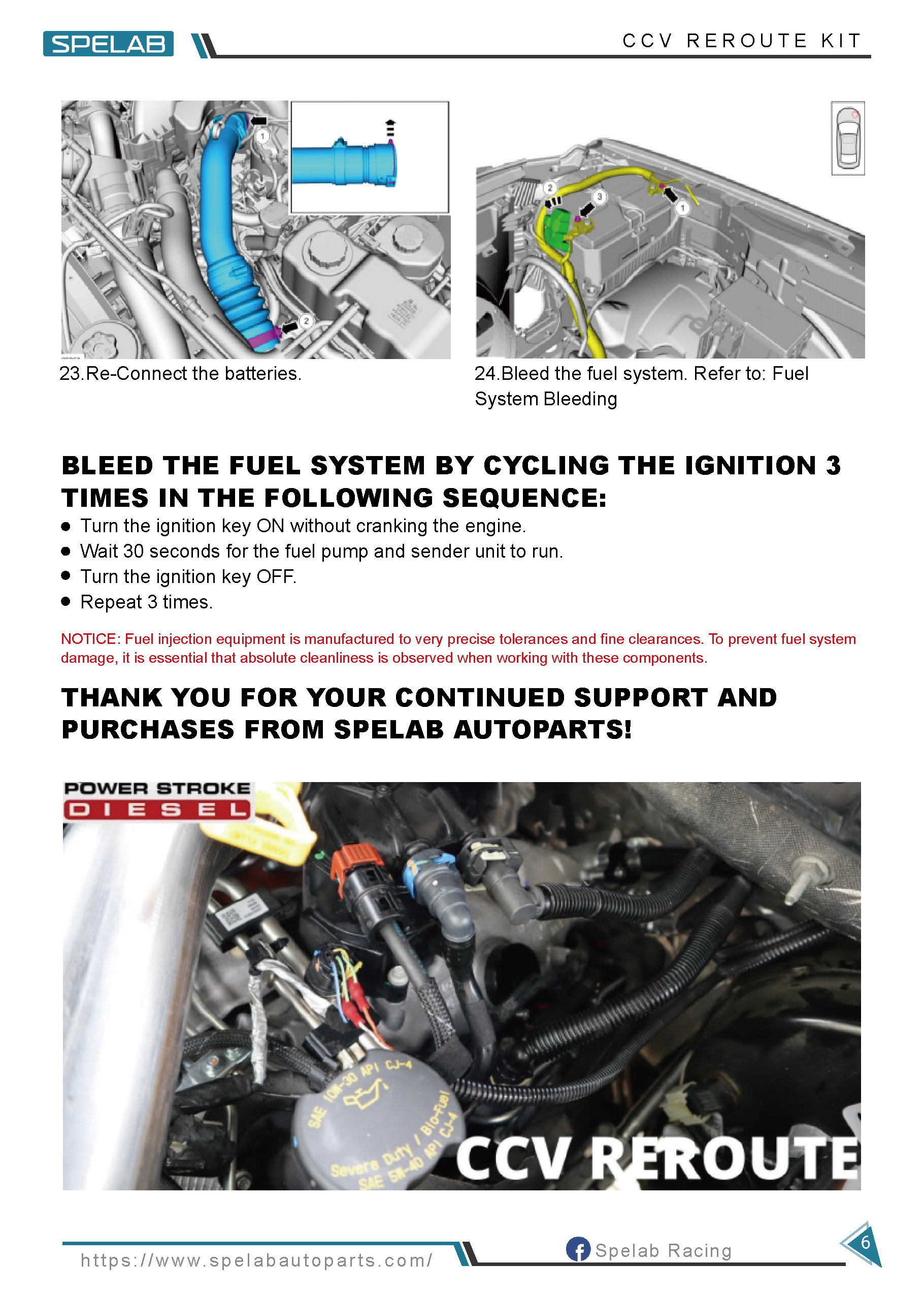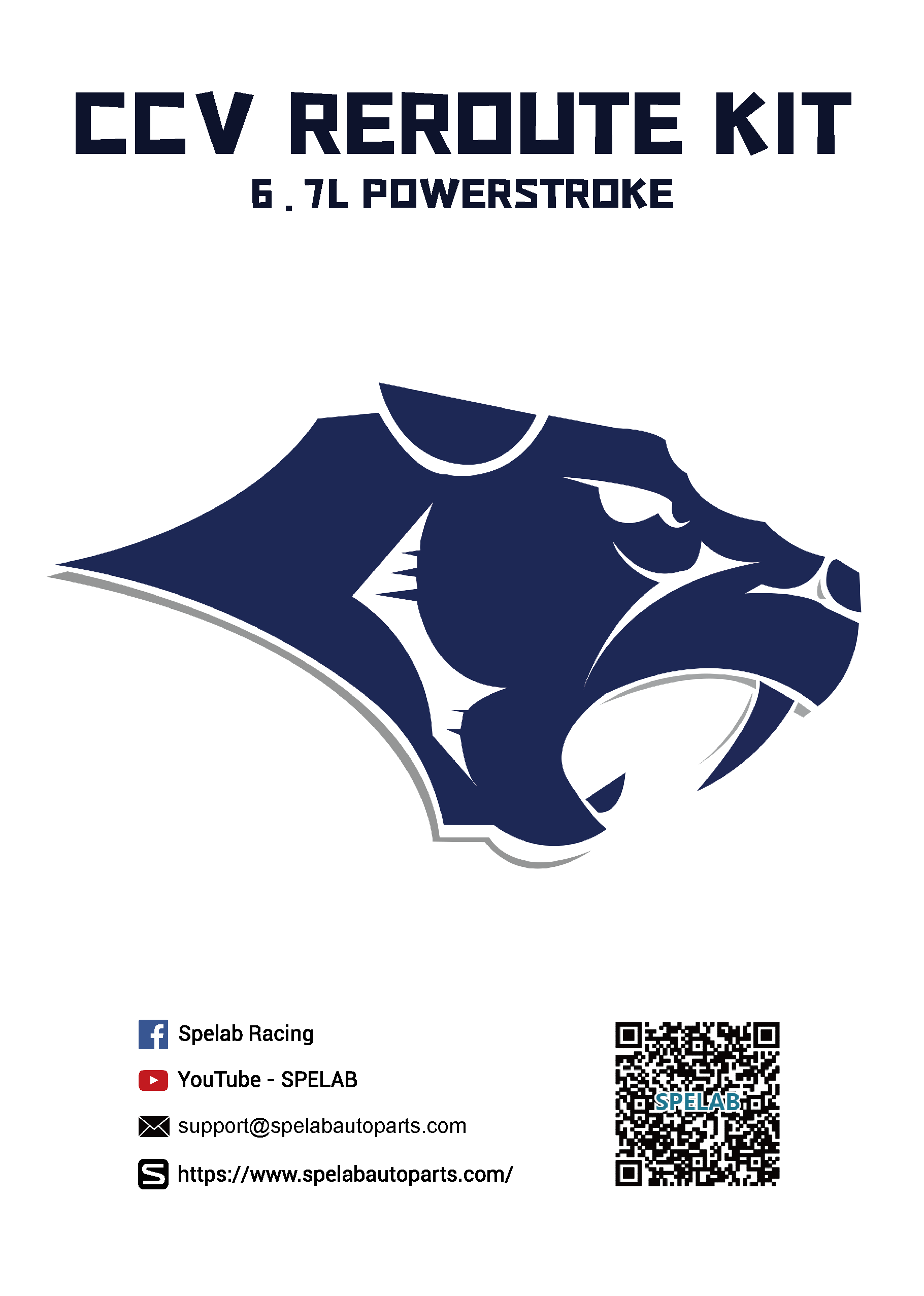
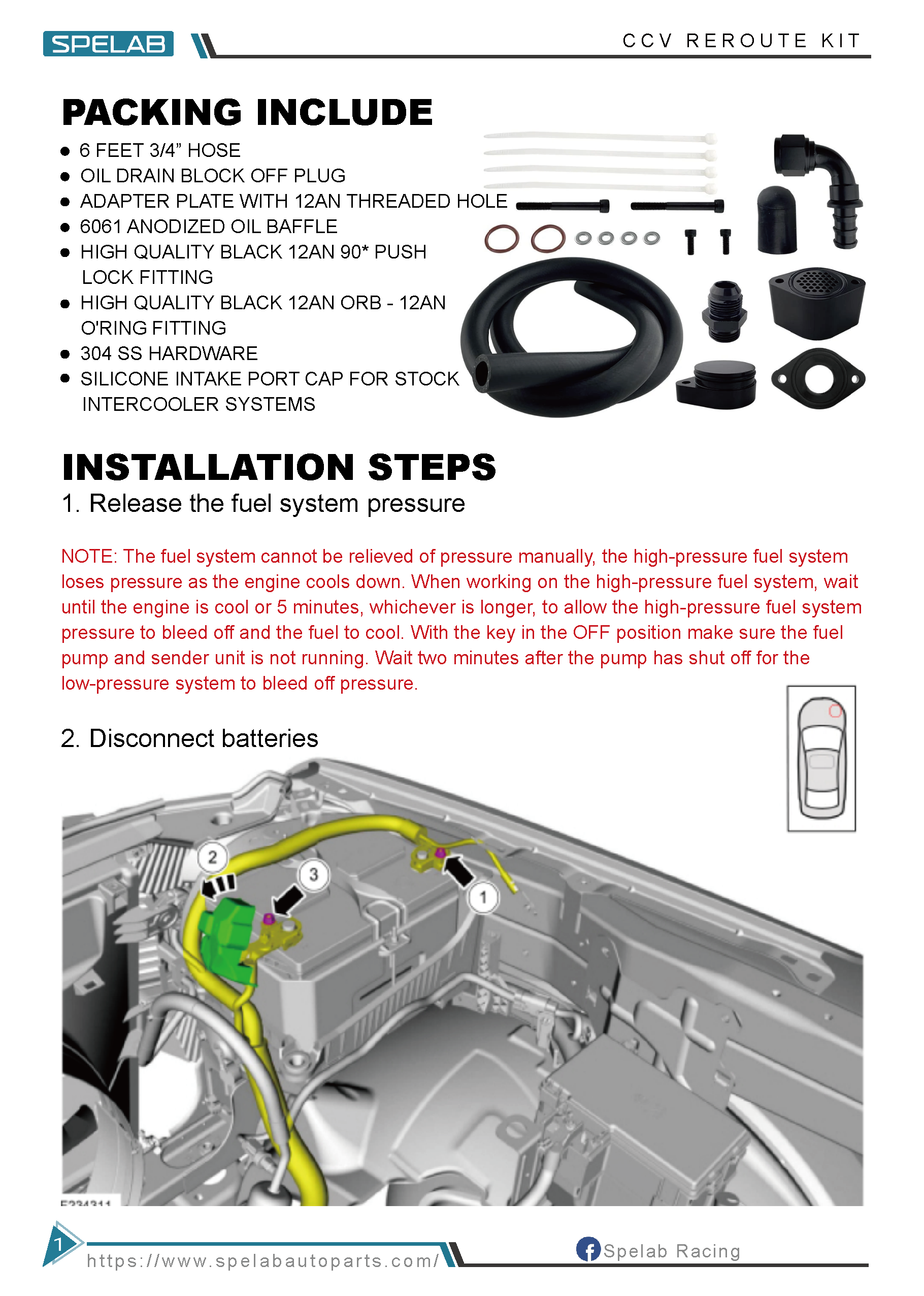
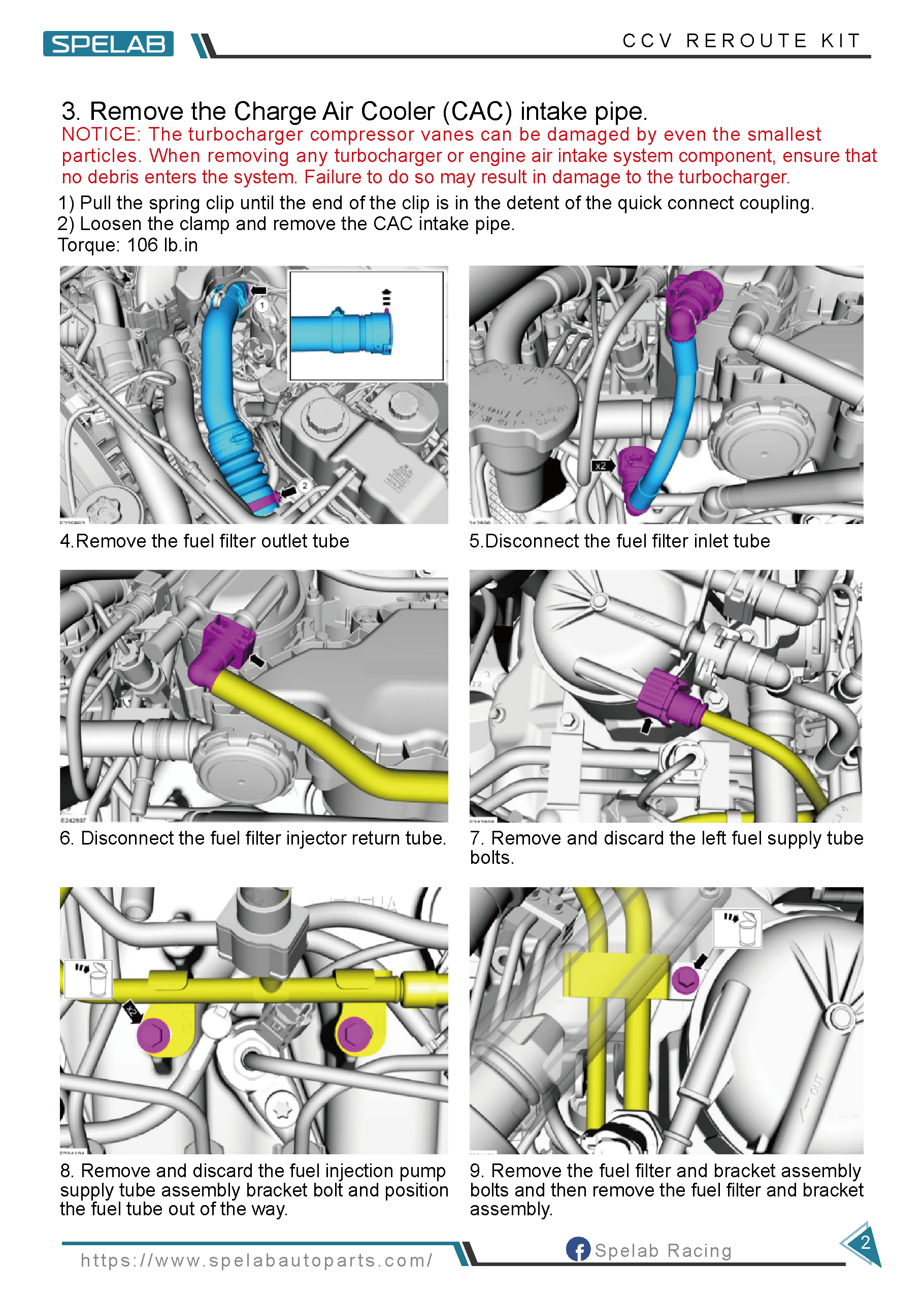
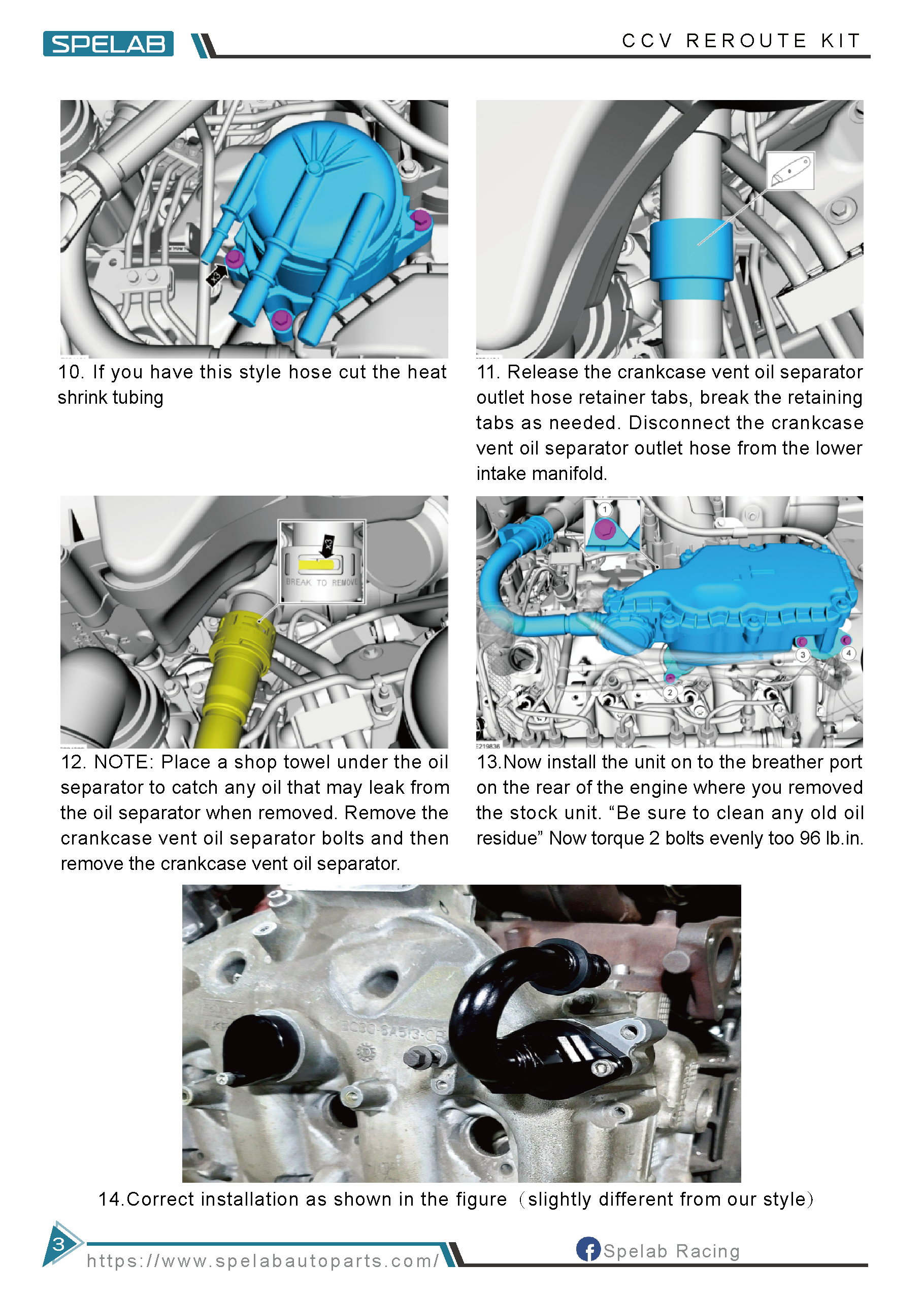

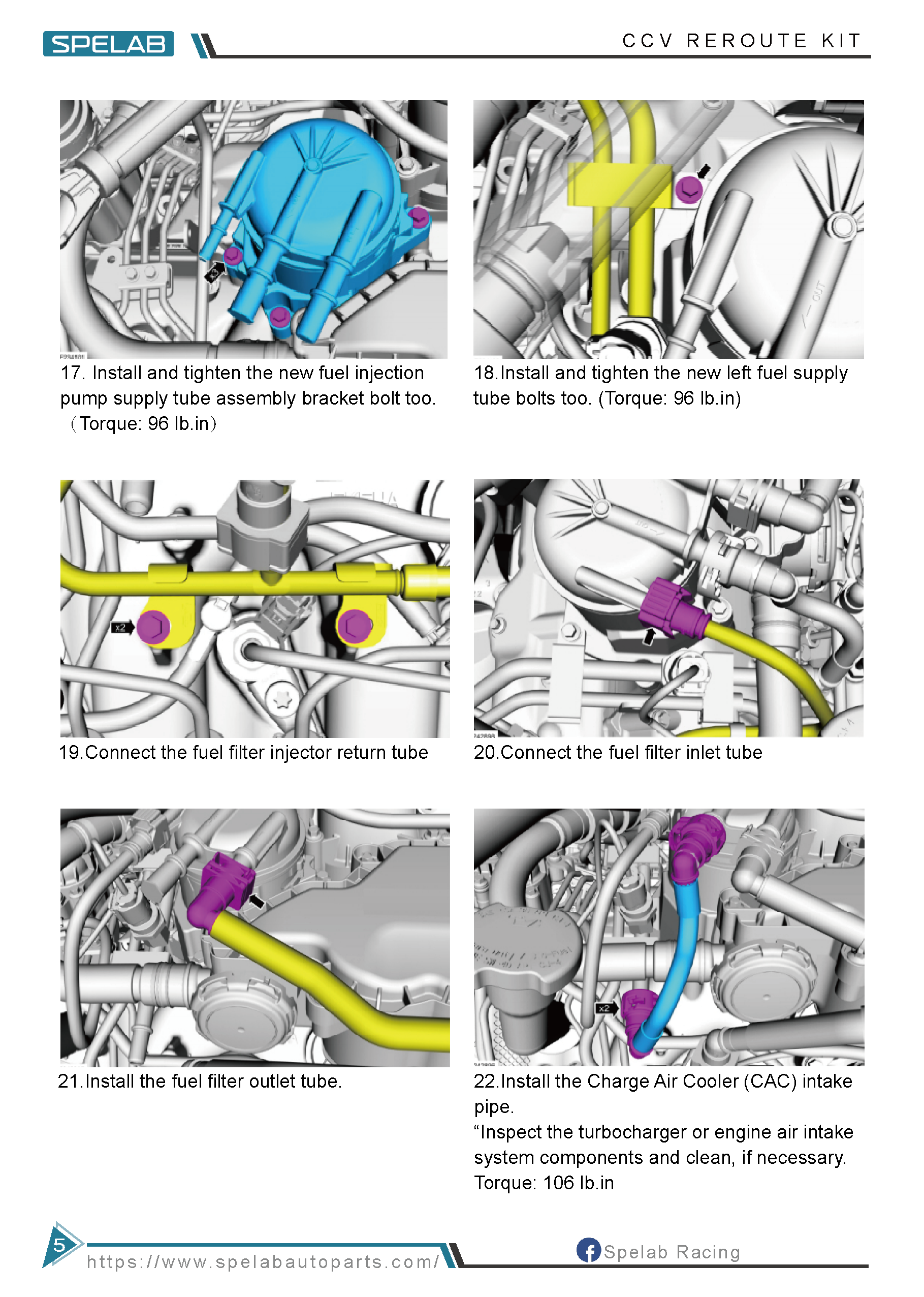
Installation Guide for 11-23 6.7L Powerstroke CCV ReRoute Kit | SPELAB
Step-by-step installation guide for 11-23 6.7L Powerstroke CCV ReRoute Kit. Improve engine performance with SPELAB.
1. Introduction
Overview of SPELAB
SPELAB, established in 2019, is dedicated to providing high-quality automotive performance parts. We specialize in intake systems, exhaust systems, engine systems, cooling systems, and both interior and exterior parts. Our mission is to offer premium products at competitive prices with excellent service. Our customers span North America, South America, Asia, the Middle East, and Europe. With warehouses in Kentucky, California, and New Jersey, we ensure timely delivery of our products. Our team is committed to designing and manufacturing high-performance auto parts, always prioritizing the customer experience and satisfaction.
Importance of the CCV ReRoute Kit
Installing a CCV ReRoute Kit, especially the 6.7 Powerstroke CCV ReRoute Kit, offers numerous benefits. It helps in reducing crankcase blow-by, decreasing oil deposits in the engine, and maintaining a cleaner intake system. By installing the CCV filter 6.7 Powerstroke, you enhance your vehicle's performance and longevity.
Applicable Vehicle Models
This guide is specifically for the 2011-2023 6.7L Powerstroke engines. The 6.7 Powerstroke CCV delete kit is designed to fit these models perfectly, ensuring optimal performance and a straightforward installation process.
Continue to the next section to learn about the tools and materials needed for the installation.
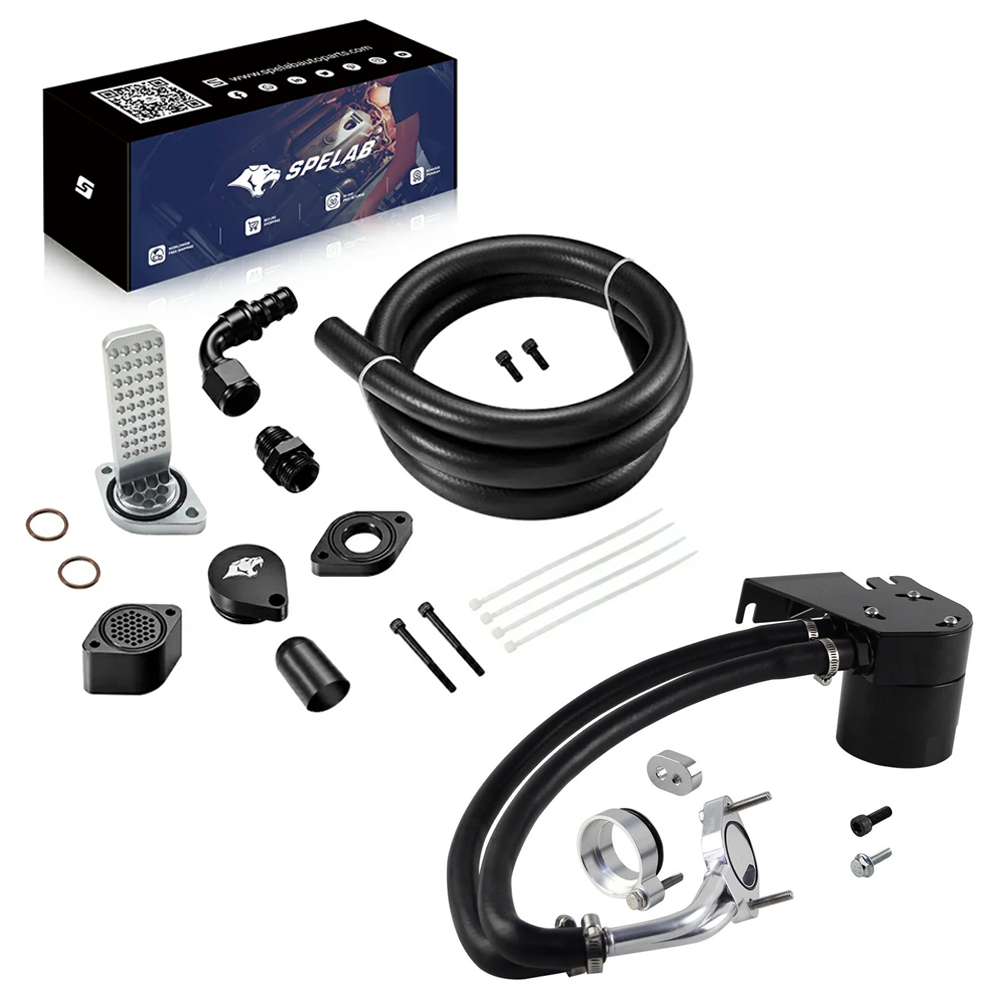
2011+ Ford 6.7L Powerstroke CCV Reroute
Remove 100% Oil Molecules 2011-2016,2017+
ccv filter 6.7 powerstroke
Buy Now2. Tools and Materials Needed
Required Tools
For a successful installation of the CCV ReRoute 6.7 Powerstroke kit, you'll need the following tools: a 3/8 drive ratchet, a 1/4 drive ratchet, various extensions, and a range of sockets. A Dremel tool can also be handy for specific adjustments. Having these tools ready ensures a smooth installation process.
Kit Components
The 6.7 Powerstroke CCV ReRoute kit from SPELAB includes all the necessary components for a complete installation. This includes high-quality hoses, mounting hardware, and the catch can. Each part is crafted to meet stringent quality standards, ensuring durability and performance. Proper identification of these components before starting will help in the systematic assembly.
Now that you have your tools and materials ready, let's move on to the pre-installation preparation steps to ensure a safe and efficient process.
3. Pre-Installation Preparation
Vehicle Preparation
Before installing the CCV ReRoute 6.7 Powerstroke kit, ensure your vehicle is properly prepared. Park your vehicle on a flat surface and allow the engine to cool down. Disconnect the battery to prevent any electrical issues during the installation. This step is crucial for safety and efficiency.
Safety Precautions
Safety is paramount during the installation process. Wear protective gloves and safety glasses to avoid injuries. Ensure your workspace is well-ventilated, as you will be dealing with engine components and possibly fumes. Following these precautions will help you avoid any accidents.
With your vehicle prepared and safety measures in place, you are now ready to begin the step-by-step installation of your 6.7 Powerstroke CCV ReRoute kit.
4. Step-by-Step Installation Instructions
Removing the OEM CCV System
Step 1: Begin by locating the OEM CCV system in your 6.7 Powerstroke engine. Carefully identify all connection points and components that need to be removed.
Step 2: Start the removal process by loosening the necessary bolts and disconnecting the hoses. Use your 3/8 drive ratchet and appropriate socket sizes for this task. For hard-to-reach bolts, utilize extensions and a U-joint. This preparation ensures you can easily access and remove the OEM system without damaging other parts.
Installing the New CCV ReRoute Kit
Step 3: Mounting the Base Plate
Install the base plate of the catch can using the provided hardware. Ensure it is securely fastened to the valve cover. A size 5 Allen bolt socket and a six-inch extension will be useful here.
Step 4: Connecting the Hoses
Route the new high-quality hoses according to the kit's instructions. Connect them to the appropriate engine parts, ensuring each connection is tight and secure. If necessary, use the Dremel tool to make adjustments for a perfect fit.
Step 5: Securing the Catch Can
Attach the catch can to the base plate. Ensure the internal catch can's cheese grater portion is facing the rear of the truck. Double-check all connections and fasten them tightly to prevent leaks.
Finalizing the Installation
Step 6: Reconnecting Removed Components
Reconnect any fuel lines or other components that were disconnected during the removal of the OEM CCV system. Ensure they are properly seated and secure.
Step 7: Routing the Discharge Hose
Route the discharge hose along the frame or exhaust system to direct any expelled gases away from critical engine components. Use zip ties to secure the hose in place.
Congratulations, you have now completed the installation of your 6.7 Powerstroke CCV ReRoute kit! Next, follow the post-installation checklist to ensure everything is functioning correctly.
5. Post-Installation Checklist
Inspecting for Leaks
After installing the 6.7 Powerstroke CCV delete kit, it's crucial to inspect for any oil or fuel leaks. Check all connections, especially around the catch can and hoses. Ensure that all bolts are tightly fastened and that there are no signs of fluid leakage. A thorough inspection at this stage can prevent future issues and maintain your vehicle's performance.
Priming the Fuel System
With the fuel lines reconnected, you will need to prime the fuel system to restore pressure. Turn the ignition key to the "on" position without starting the engine. Do this five to seven times to allow the fuel pump to build up pressure. This step ensures that the fuel system is ready for operation and helps avoid any starting issues.
Cleaning Up
Once the inspection and priming are complete, clean up the engine bay. Remove any tools, old parts, or debris from the installation area. Keeping the engine bay clean not only improves the overall appearance but also makes it easier to spot any potential issues in the future.
Now that the installation and initial checks are complete, let's discuss the ongoing maintenance and follow-up steps to keep your CCV ReRoute 6.7 Powerstroke system in top condition.
6. Maintenance and Follow-Up
Recommended Maintenance Schedule
To ensure the long-term effectiveness of your 6.7 Powerstroke CCV ReRoute kit, adhere to a regular maintenance schedule. Check the CCV filter and hoses every 10,000 miles for signs of wear or blockage. Regular inspections help prevent potential issues and maintain optimal engine performance. If you notice any excessive buildup or wear, replace the components as needed.
Long-Term Benefits of the CCV ReRoute Kit
Installing the CCV delete 6.7 Powerstroke kit offers significant long-term benefits. It reduces oil contamination in the intake system, leading to cleaner engine components and improved performance. This system helps to prolong the life of your engine by preventing oil buildup and reducing maintenance costs. By keeping the engine cleaner, you ensure better fuel efficiency and reliability.
By following these maintenance steps and understanding the benefits, you can maximize the performance and lifespan of your 6.7 Powerstroke CCV ReRoute kit.
Conclusion
Recap of Benefits
Installing the 6.7 Powerstroke CCV ReRoute kit from SPELAB significantly enhances your vehicle's performance. This kit reduces oil contamination, prevents buildup in the intake system, and keeps your engine bay less cluttered. By maintaining a cleaner engine, you ensure better longevity and reliability for your 6.7 Powerstroke.
Encouragement to Share Feedback
We encourage you to share your installation experience and feedback. Your insights help us improve our products and services. For any questions or support, please contact SPELAB customer service at service@spelabautoparts.com.
By following this guide, you have successfully installed the CCV ReRoute 6.7 Powerstroke kit. Enjoy the enhanced performance and cleanliness of your engine!
See for more installation instructions:
spelab egr delete instructions
6.7 cummins egr delete instructions
how to install egr delete kit 6.7 cummins
ford 6.7 egr delete instructions
FAQs
Q1: What does a CCV reroute kit do?
A1: A CCV reroute kit diverts crankcase ventilation gases away from the intake system, reducing oil deposits and keeping the intake cleaner, thus enhancing engine performance.
Q2: How often do you change the CCV filter on a 6.7 Powerstroke?
A2: The CCV filter on a 6.7 Powerstroke should be checked every 10,000 miles and replaced if it shows signs of wear or blockage to ensure optimal performance.
Q3: What does a CCV delete do for a 6.7 Powerstroke?
A3: A CCV delete removes the factory crankcase ventilation system, which recirculates gases into the intake, and replaces it with a system that vents these gases externally, reducing oil contamination in the intake system.
Q4: What does the CCV do in a Powerstroke?
A4: The CCV (Crankcase Ventilation) system in a Powerstroke engine vents crankcase gases, reducing pressure and preventing oil leaks. It recirculates these gases back into the intake system to burn them off, meeting emission standards.
Q5: How to tell if CCV is bad?
A5: A bad CCV can be identified by symptoms such as increased oil consumption, oil leaks, smoke from the exhaust, or a noticeable decrease in engine performance.
Q6: What are the symptoms of a clogged CCV filter?
A6: Symptoms of a clogged CCV filter include excessive oil consumption, oil leaks, reduced engine performance, and increased pressure in the crankcase, which can lead to gasket and seal failures.
Q7: Why is the CCV system important for the engine?
A7: The CCV system is crucial for maintaining optimal engine performance by reducing crankcase pressure, preventing oil leaks, and ensuring that harmful gases are recirculated and burned off, thus meeting emission standards.
Q8: Can a CCV reroute kit improve fuel efficiency?
A8: Yes, by keeping the intake system cleaner and reducing oil deposits, a CCV reroute kit can improve fuel efficiency and overall engine performance.
Q9: What are the long-term benefits of using a CCV reroute kit?
A9: Long-term benefits include a cleaner intake system, reduced maintenance costs, extended engine life, and improved overall performance.
Q10: Is installing a CCV reroute kit difficult?
A10: Installing a CCV reroute kit is relatively straightforward with the right tools and instructions. However, it requires basic mechanical knowledge and attention to detail to ensure a successful installation.

